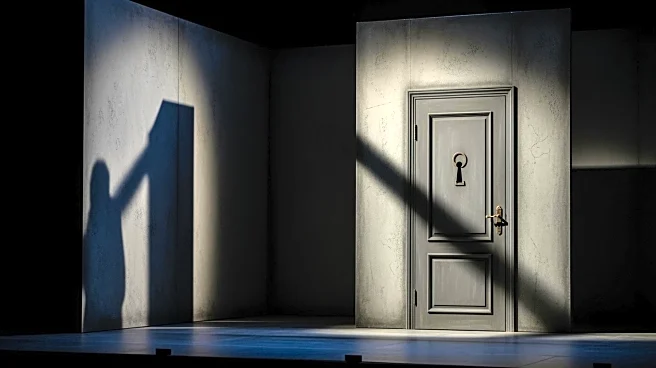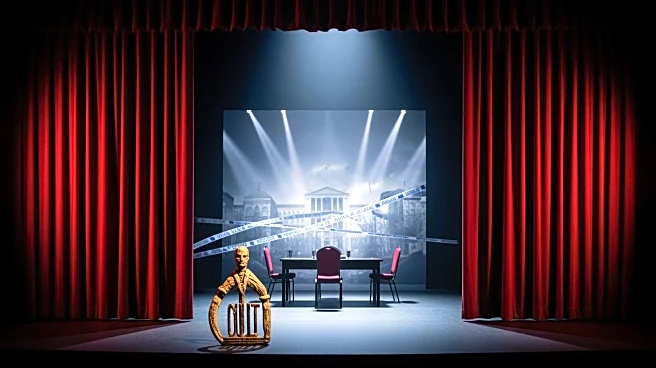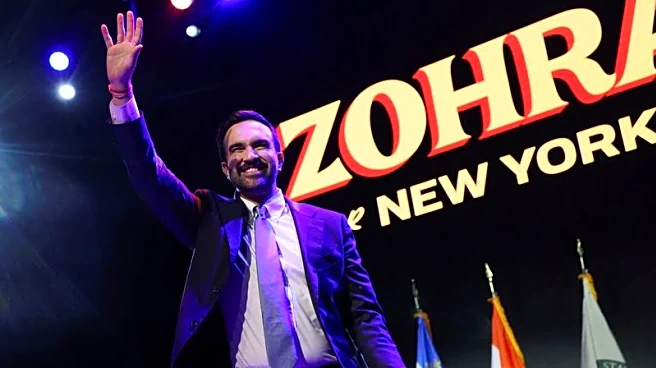What's Happening?
Nazareth Hassan's new Off-Broadway play, 'Practice,' delves into the dynamics of cult-like behavior within a theater company. The play centers around Asa Leon, a charismatic theater artist who, along with their husband Walt, uses a 'genius grant' to transform
a historic church in Brooklyn into a theater and communal living space. The actors, who live and work together, undergo intense exercises and manipulative tactics under Asa's leadership, blurring the lines between individual will and collective identity. The play highlights the power dynamics and potential for abuse within artistic communities, drawing parallels to real-world cults.
Why It's Important?
The play 'Practice' sheds light on the often-overlooked issue of power abuse in artistic environments, where charismatic leaders can exploit their influence over vulnerable individuals. This narrative is particularly relevant in the context of recent high-profile cases of abuse within various industries, including entertainment. By dramatizing these dynamics, the play encourages audiences to reflect on the susceptibility of individuals to manipulative tactics and the importance of safeguarding against such abuses. It also raises questions about the ethical responsibilities of leaders in creative fields.
What's Next?
As 'Practice' continues its run, it is likely to spark discussions about the ethical boundaries of leadership in the arts. The play's exploration of cult dynamics may prompt theater companies and other creative organizations to re-evaluate their practices and ensure protective measures are in place for their members. Additionally, the play's reception could influence future productions to tackle similar themes, furthering the conversation about power and manipulation in the arts.
Beyond the Headlines
The play's exploration of cult-like behavior in theater also touches on broader societal issues, such as the allure of charismatic leaders and the human tendency to seek belonging in tightly-knit communities. These themes resonate beyond the arts, reflecting patterns seen in various social and political contexts. The play invites audiences to consider the psychological and cultural factors that contribute to the formation of such groups and the potential consequences of unchecked authority.















